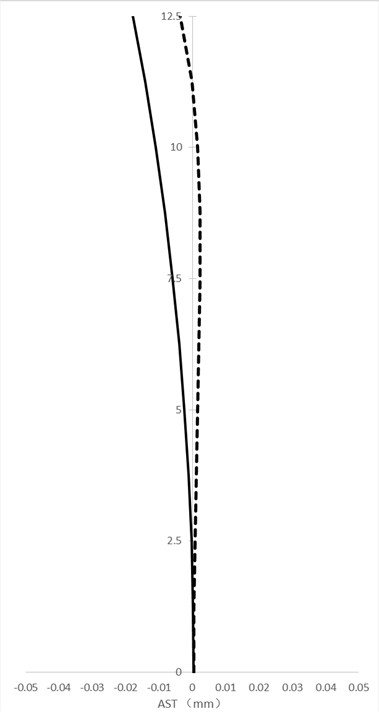Microscope phase contrast objective lens
A microscope and phase contrast technology, applied in the field of optical imaging, can solve the problems of long total length of the objective optical system, high cost of lens material, and insufficient magnification, and achieve the effect of ensuring optical performance, good optical performance, and a small number of lenses
- Summary
- Abstract
- Description
- Claims
- Application Information
AI Technical Summary
Problems solved by technology
Method used
Image
Examples
Embodiment 1
[0083] like figure 1As shown, the microscope phase contrast objective lens of Embodiment 1 includes an object surface 700, a cover glass 701, a first lens group 81 and a second lens group 82, wherein the first lens group 81 includes a first lens 711 with positive refractive power, The second lens 712 of negative refractive power, the third lens 713 of negative refractive power, the fourth lens 714 of positive refractive power, the fifth lens 715 of positive refractive power, the sixth lens 716 of negative refractive power and the seventh lens 717 of positive refractive power; 711 The surface facing the object side is the first lens first surface 7111, and the surface facing the image side is the first lens second surface 7112; the second lens 712 facing the object side is the second lens first surface 7121, facing the image side The surface of the third lens 713 is the second surface 7122 of the second lens; the surface of the third lens 713 facing the object side is the first...
Embodiment 2
[0110] like Image 6 As shown, the second embodiment also includes the first lens group 81, the second lens group 82, the third lens group 83, the first lens 711, the second lens 712, the third lens 713, the fourth lens 714, the first lens Five lenses 715, sixth lens 716, seventh lens 717, phase plate glass one 721, phase plate glass two 722, and eighth lens 723. The difference is that the material of the first lens 711 is selected, and the optical parameters of each lens are the same as the embodiment One exists differently.
[0111]Specifically, in the phase contrast objective optical system of the second embodiment, the field of view is 25mm, the longitudinal chromatic aberration defined by the focal position deviation between C-e is 0.77 times of the focal depth, and the longitudinal chromatic aberration defined by the focal position deviation between g-e Chromatic aberration is 0.71 times the depth of focus, where C is 656.27nm, g is 435.84nm, and e is 546.07nm. The dep...
Embodiment 3
[0134] like Figure 11 As shown, the phase contrast objective optical system in the third embodiment also includes a first lens group 81, a second lens group 82, a third lens group 83, a first lens 711, a second lens 712, a third lens 713, The fourth lens 714, the fifth lens 715, the sixth lens 716, the seventh lens 717, the phase glass one 721, the phase glass two 722, and the eighth lens 723, the difference is that the material of the first lens 711 is selected, and each lens There are some differences in the optical parameters of Example 2.
[0135] Specifically, in the phase contrast objective optical system of the second embodiment, the field of view is 25 mm, the longitudinal chromatic aberration defined by the focus position deviation between C-e is 0.70 times the focal depth, and the longitudinal chromatic aberration defined by the focus position deviation between g-e Chromatic aberration is 0.68 times the depth of focus, where C is 656.27nm, g is 435.84nm, and e is 5...
PUM
 Login to View More
Login to View More Abstract
Description
Claims
Application Information
 Login to View More
Login to View More - R&D
- Intellectual Property
- Life Sciences
- Materials
- Tech Scout
- Unparalleled Data Quality
- Higher Quality Content
- 60% Fewer Hallucinations
Browse by: Latest US Patents, China's latest patents, Technical Efficacy Thesaurus, Application Domain, Technology Topic, Popular Technical Reports.
© 2025 PatSnap. All rights reserved.Legal|Privacy policy|Modern Slavery Act Transparency Statement|Sitemap|About US| Contact US: help@patsnap.com



